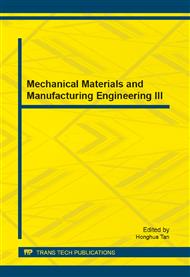p.131
p.137
p.142
p.148
p.154
p.159
p.163
p.167
p.173
The Aluminum Brazing Pieces of Mechanical Performance Based on GRNN Neural Network
Abstract:
Aluminum and aluminum alloy were widely used in various industrial fields,the key to application is the reliable welding. In this thesis,LF21 aluminum alloy brazing materials were designed and prepared by Orthogonal experiment,and mechanical properties of the brazing specimen was tested. Based on the GRNN(Generalized Regression Neural Network),Nonlinear relationship modle of brazing material preparation parameters and mechanical properties of the weldment was established.The results show that the model has better stability.When smooth factor value is 0.1,the network approximation error and prediction error absolute value is 0.01%.It can be realized that an nonliner mapping between the aluminum alloy brazing preparation parameters and solder joint tensil strenth based on the Orthogonal test and can do better prediction of the weld mechanical properties,according to brazing material preparation parameters.
Info:
Periodical:
Pages:
154-158
Citation:
Online since:
November 2013
Authors:
Price:
Сopyright:
© 2014 Trans Tech Publications Ltd. All Rights Reserved
Share:
Citation:


